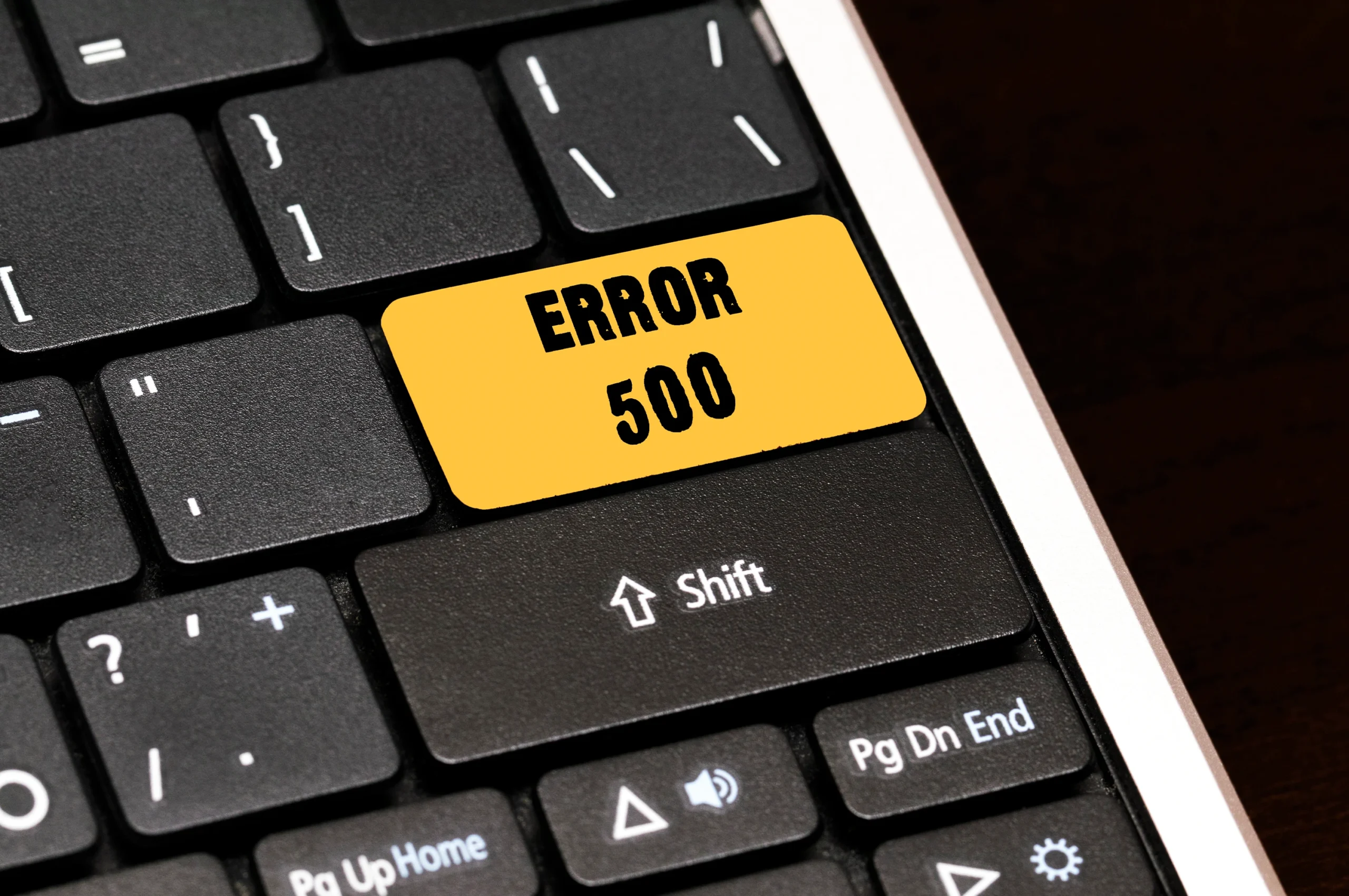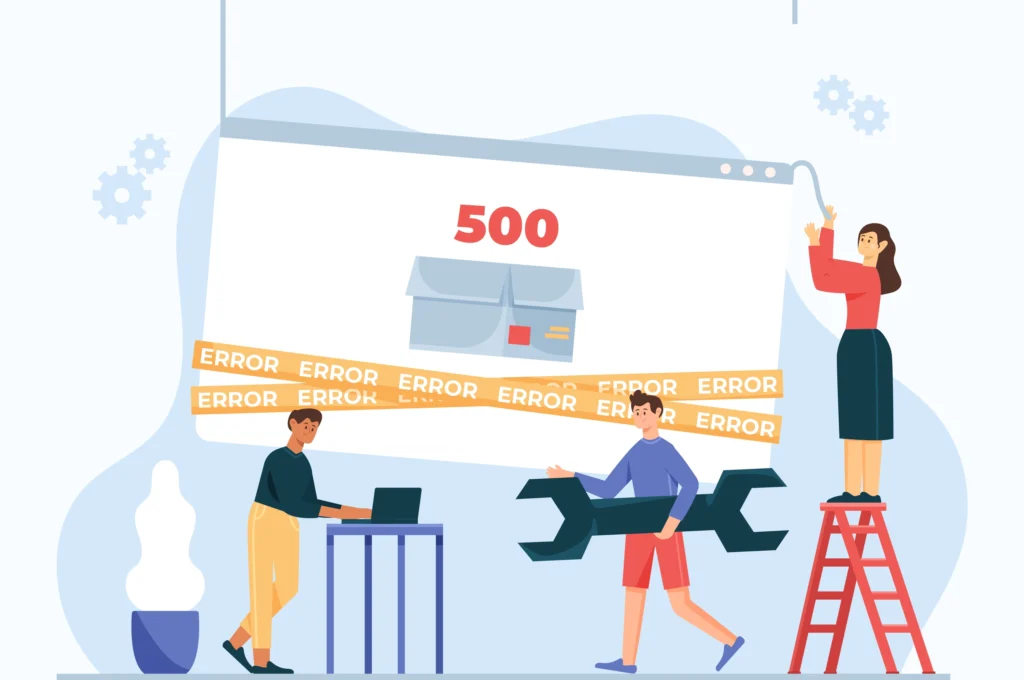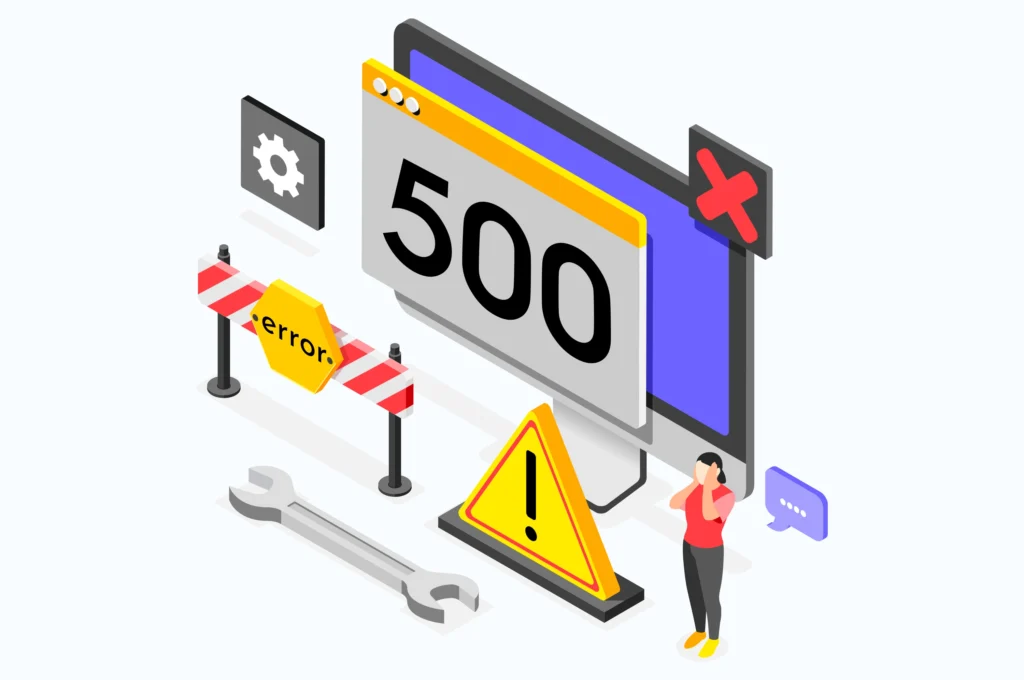
What is Error 500? A Simple Guide to Understanding and Fixing the HTTP 500 Internal Server Error
- Arslan Tahir
- February 24, 2025
- Web Design
- 0 Comments
You might have wondered about the meaning of HTTP 500 Internal Server Error and how to fix it. You’re not the only one who has experienced this error! We will explain why error 500 occurs, what is error 500 and how to fix it.
It can be confusing to encounter a 500 WordPress error or other 500 error messages, whether you are managing a site or browsing. We’ll clear up any confusion and walk you through the simple steps necessary to restore your website to normal.
What is Error 500?
The 500 internal server is a server-side problem. This means that the issue is with the server of the website, not your device or web browser. This error means that there was a problem on the server of the website and the request could not be completed.
The error does not provide any specific information about the problem. It’s like the server telling you, “Something has gone wrong, but I cannot tell you what it is.”
Why does the 500 Internal Server Error occur?
It cannot be easy to diagnose the 500-error code. Here are the most common causes, such as:
1. Too much traffic on the server
If a website receives too many visitors all at once, it can overwhelm the server. The server can crash due to this overload, leading to a 500 error.
2. Incorrect or Faulty Permissions
Each website has its permissions (rules which allow or deny access to files). These permissions can be set incorrectly and cause the server to not load the website correctly, resulting in an internal server error.
3. Problems with Plugins or Themes (for WordPress Websites).
WordPress users can experience errors when using plugins and themes that are out-of-date or incompatible. A plugin that is not working properly could result in a 500 Internal Server Error WordPress message.
5. Exceeding PHP Limits
If a PHP script is using too much memory or execution time, it can cause a 500 error. The server may encounter this error when the script is too large or complex.
How To Fix The 500 Internal Server Error
It can be overwhelming to fix a 500 Internal Server Error, but we’ve got a few simple steps you can try. We’ll break this down step-by-step.
try. We’ll break this down step-by-step.
1. Refresh the page
The 500 error can be temporary. Press Ctrl+R or refresh your browser to refresh the page. This is a quick way to determine if it was a mistake.
2. Clear your browser cache
You may be seeing an older version of the site in your browser. To ensure you are viewing the latest version of the website, clear your browser cache (temporary Internet files). Sometimes, this can fix the issue.
3. Check server logs
Look at the server logs to see if refreshing and clearing your cache doesn’t work. These logs will show you what went wrong and give you clues on how to fix it. If you don’t know where these logs are, ask your host for assistance.
4. Disable plugins (for WordPress sites)
Plugins are often the cause of 500 internal server errors on WordPress sites. Disable all plugins to test if the plugin is the cause. Reactivate each plugin one by one to determine the cause.
5. Check for overloaded server
If you get a large number of visitors at the same time, your server may struggle to cope with it, leading to a 500 error. You may need to upgrade hosting or optimize your website to accommodate more visitors if this occurs. Use caching to reduce the server load.
How to prevent Error 500
Although you cannot always avoid internal server errors, you can reduce your chances of experiencing them:
1. Stay Updated
Update your WordPress, plugins and themes regularly. Updates improve security and fix bugs. They also ensure your site works properly.
2. Back up your website regularly
You can easily restore your website if something goes wrong by regularly backing it up. You can back up your WordPress website using plugins or automatic backups offered by many hosting providers.
3. Monitor Website Traffic
You can track the traffic to your website using tools such as Google Analytics. You can keep track of sudden spikes in traffic that could overload your server or cause errors.
Common Causes of a 500 Error
There can be many reasons for a 500-server error, including:
- The server overloaded due to too many visitors
- Faulty themes or plugins WordPress.
- Corrupted htaccess file.
- Exceeding PHP memory limits.
Does Error 500 occur on the client side or server side?
The 500 error can be a server issue. The problem is not with your browser or device but with the server hosting the website. The server is saying, “I cannot process your request at this time.”
Can a 500 Error Affect SEO?
If your website is constantly showing 500 internal server errors, this can negatively impact your SEO. For example, Google may have difficulty indexing your website. This could result in lower search rankings. In order to avoid this, fix the problem as quickly as possible. Also, ask Google to crawl the page again.
Final Thoughts
It’s frustrating, but the HTTP 500 internal error can be fixed. You know how to fix the error, whether it’s due to a plugin or a server overload. This error can be prevented by keeping your site up-to-date, regularly backing it up, and monitoring the traffic.
Follow the solutions provided in this guide to quickly restore your website and keep it running smoothly.




